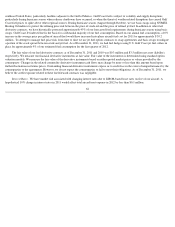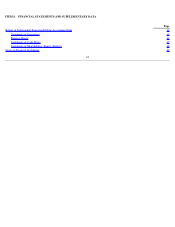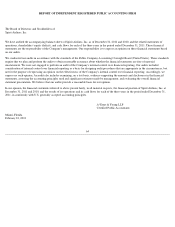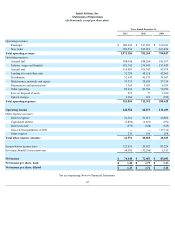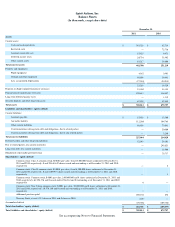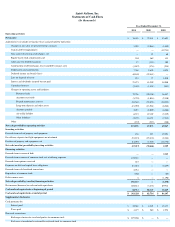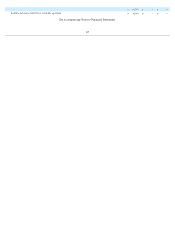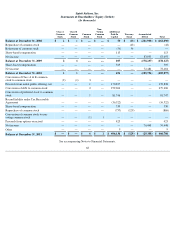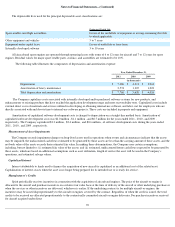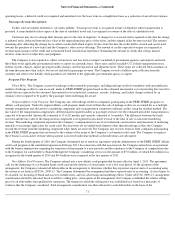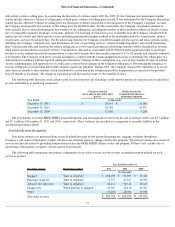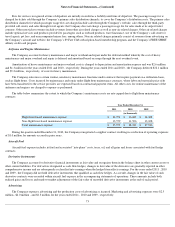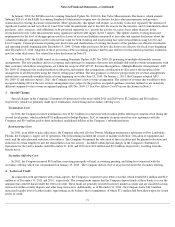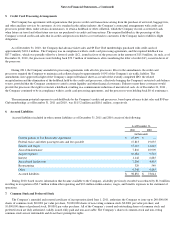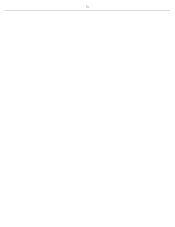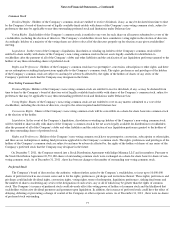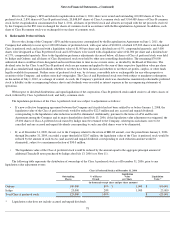Spirit Airlines 2011 Annual Report Download - page 80
Download and view the complete annual report
Please find page 80 of the 2011 Spirit Airlines annual report below. You can navigate through the pages in the report by either clicking on the pages listed below, or by using the keyword search tool below to find specific information within the annual report.
Notes to Financial Statements—(Continued)
The depreciable lives used for the principal depreciable asset classifications are:
All aircraft and spare engines are operated through operating leases with terms of 6 to 12 years for aircraft and 7 to 12 years for spare
engines. Residual values for major spare rotable parts, avionics, and assemblies are estimated to be 10%.
The following table illustrates the components of depreciation and amortization expense:
The Company capitalizes costs associated with internally developed and/or purchased software systems for new products, and
enhancements to existing products that have reached the application development stage and meet recoverability tests. Capitalized costs include
external direct costs of materials and services utilized in developing or obtaining internal-use software, and labor cost for employees who are
directly associated with and devote time to internal-use software projects. These costs are included in property and equipment.
Amortization of capitalized software development costs is charged to depreciation on a straight-line method basis. Amortization of
capitalized software development costs was $2.0 million , $1.1 million , and $0.7 million for the years ended 2011 , 2010 , and 2009 ,
respectively. The Company capitalized $3.3 million , $2.4 million , and $0.6 million , of software development costs during the years ended
2011 , 2010 , and 2009 , respectively.
Measurement of Asset Impairments
The Company records impairment charges on long-lived assets used in operations when events and circumstances indicate that the assets
may be impaired, the undiscounted cash flows estimated to be generated by those assets are less than the carrying amount of those assets, and the
net book value of the assets exceeds their estimated fair value. In making these determinations, the Company uses certain assumptions,
including, but not limited to: (i) estimated fair value of the assets; and (ii) estimated, undiscounted future cash flows expected to be generated by
these assets, which are based on additional assumptions such as asset utilization, length of service the asset will be used in the Company’s
operations, and estimated salvage values.
Capitalized Interest
Interest attributable to funds used to finance the acquisition of new aircraft is capitalized as an additional cost of the related asset.
Capitalization of interest ceases when the asset is no longer being prepared for its intended use or is ready for service.
Manufacturer’s Credits
Spirit periodically receives incentives in connection with the acquisition of aircraft and engines. The price of the aircraft or engine is
allocated to the aircraft and purchase incentives on a relative fair value basis at the time of delivery of the aircraft or other underlying purchase or
when the services or other incentives are delivered, whichever is earlier. If the underlying contract is for multiple aircraft or engines, the
incentives may be issued disproportionately to the aircraft or engines covered by the contract. Regardless of when the credit is issued, the total
credits to be received are allocated proportionately to the contractually committed aircraft or engine deliveries. For purchase incentives received
for aircraft acquired under direct
70
Estimated Useful Life
Spare rotables and flight assemblies Lesser of the useful life of equipment or average remaining fleet life
to which applicable
Other equipment and vehicles 5 to 7 years
Equipment under capital lease Lesser of useful life or lease term
Internally developed software 3 to 10 years
Year Ended December 31,
2011
2010
2009
(in thousands)
Depreciation
$
5,186
$
4,313
$
3,901
Amortization of heavy maintenance
2,574
1,307
1,023
Total depreciation and amortization
$
7,760
$
5,620
$
4,924


